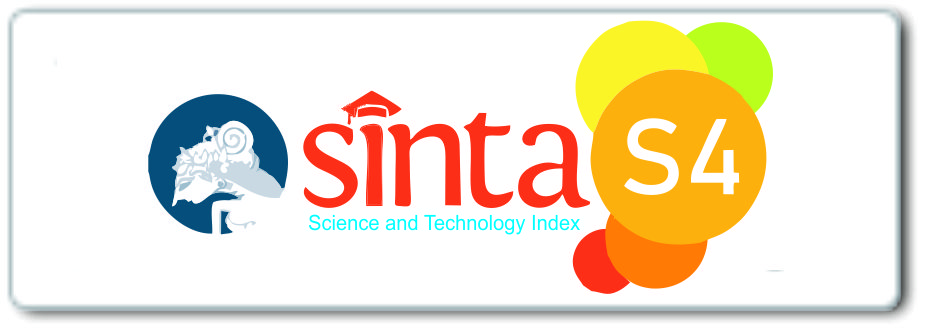Branding Strategy for An Nur II Al-Murtadlo as a Tourism Islamic Boarding School through Digital Public Relations
Abstract
Islamic boarding schools are Islamic educational institutions that apply traditional learning methods such as bandongan and sorogan. The learning implemented by Islamic boarding schools has now evolved following existing developments, a shift from the traditional learning system to learning in the digital era, this has an impact on the branding strategy applied by Islamic boarding schools to the general public. The PESO model analysis at the An Nur 2 Islamic Boarding School is used to look at Islamic boarding school branding through the media, especially owned media. This article discusses the influence of the digitalization of the An Nur 2 Islamic boarding school on the branding strategy and optimization of Islamic boarding school learning in the era of digitalization. This qualitative research uses a descriptive approach, observation and online interviews as supporting data. The results of the research explain that the percentage of digitalization strength in an Islamic boarding school can have a very significant effect on strengthening the Islamic boarding school's credibility as a branding strategy and influence the success of existing learning systems and methods in Islamic boarding schools. Thus, the existence of Islamic boarding schools known as traditional Islamic education institutions can develop. both with digitalization and playing an important role in social control and branding of Islamic boarding school institutions through the media, especially, in the midst of the crisis of decreasing credibility of Islamic boarding schools in front of the general public.
Keywords
Full Text:
PDFReferences
Aisyah, Si. (2020) ‘pesantrens sebagai destinasi wisata: studi awal atas pondok pesantren Aliran sesat Biharu Bahri Malang Jawa Timur’, jurnal Intaj, 04(01), pp. 133–154.
Annur, C. M. (2022) ‘Ada 26.975 Pesantren di Indonesia, mana yang terbanyak?’, databoks.katadata, January, pp. 1–3.
Arief, N. (2019) Public Relation In The Era Of Artificial Intelligence Bagaimana Big Data & Al Merevolusi Dunia PR. 1st edn. Jakarta: Simbiosa Rekatama.
Cultip, S. C. B. G. . (2009) ‘Effective Public Relations’, in 9. Jakarta: Kencana.
Djawahir, A. U. (2018) ‘ASSET BASED COMMUNITY DEVELOPMENT DI PESANTREN WISATA: IMPLEMENTASI STRATEGIS DI PP. AN-NUR 2 AL MURTADLO MALANG.’, At- Tamkin: Jurnal Pengabdian Masyarakat, 1, pp. 23–34. doi: https://doi.org/10.33379/attamkin.v1i1.95.
Gelder, S. V. A. N. (2005) ‘The new imperatives for global branding: Strategy, creativity and leadership.’, Journal of Brand Management, 12(5), pp. 395–404. doi: doi:10.1057/palgrave.bm.2540234.
Heath, R. L. (2013) Enciclopedia of Public Relations. 2nd edn. Edited by Singapore. SAGE Publications.inc.
Indrawan, I. W. (2021) ‘Urgensi Digitalisasi Pesantren’, Republika Jogja, May, pp. 1–3.
Jefkins, F. (2003) ‘Public Relations’, in edisi kelima. Jakarta: PT Gelora Aksara Pratama.
Kejora, S. C. (2019) ‘Upaya Membangun Citra Dan Meningkatkan Minat Masyarakat Di Lembaga Pendidikan Islam Melalui Manajemen Strategis Public Relations’, Tesis UIN Malik Ibrahim Malang, pp. 1–289.
Kejora, S. C. (2021) ‘Strategic Management Of Public Relations In Islamic Education Institutions To Build Public Image And Increase Public Interest’, J-Mpi, 5(2), pp. 112–120. doi: 10.18860/jmpi.v5i2.9011.
Kotler, Philip; Keller, K. (2013) Manajemen Pemasaran. 13 jilid 1. Jakarta: Airlangga.
Lattimore, D. O. B. E. L. T. (2014) Public Relations Profesi dan Praktik. Jakarta: Salemba Humanika.
Macnamara, J. et al. (2016) ‘“PESO” media strategy shifts to “SOEP”: Opportunities and ethical dilemmas’, Public Relations Review, 42(3), pp. 377–385. doi: 10.1016/j.pubrev.2016.03.001.
Masyhari Makhasi, G. Y. and Lupita Sari, S. D. (2018) ‘Strategi Branding Pariwisata Indonesia Untuk Pemasaran Mancanegara’, ETTISAL Journal of Communication, 2(2), p. 31. doi: 10.21111/ettisal.v2i2.1265.
Mubarokah, E. (2022) ‘20 Santriwati di Cabuli di Pimpinan Pondok Pesantren’, Kompas.com, August, pp. 1–3.
Mujib, F. (2020) School Branding : Strategi di Era Disruptif. 1st edn. Edited by bunga sari Fatmawati. Jakarta: Bumi Aksara.
Nasrullah, R. (2020) Etnografi Virtual Riset Komunikasi, Budaya dan Sosiatekologi di Internet. Empat. Edited by N. Siti Nurbaya. Bandung: Remaja Rosdakarya.
Neumeier, M. (2015) The Brand Flip: Why customers now run companies and how to profit from it. 1st edn. new riders.
Permatasari, A. N. et al. (2021) ‘Digital Public Relations : Trend and Required Skills Kehumasan Digital : Tren dan Kompetensi yang Dibutuhkan’, 6(2), pp. 373–386.
Prasetyo, B. D., & Febriani, N. S. (2020) Strategi Branding: Teori dan Perspektif Komunikasi dalam Bisnis. Malang: Universitas Brawijaya Press.
Putra, D. N. T. and Zaki, I. (2020) ‘Peran Pondok Pesantren an-Nur 2 Al-Murtadlo Terhadap Pemberdayaan Ekonomi Masyarakat Kelurahan Bululawang Malang’, Jurnal Ekonomi Syariah Teori dan Terapan, 7(11), p. 2252. doi: 10.20473/vol7iss202011pp2252-2266.
Putra, R. A. (2019) ‘Diskursus Branding Perempuan Pondok Pesantren di Instagram ( Studi Kasus Pondok Pesantren Modern Gontor Putri 1 ) Robby Aditya Putra’, Dakwah dan Komunikasi, 4(1), pp. 1–14.
Ruslan, R. (2001) Manajemen Humas dan Manajemen Komunikasi: Konsep dan Aplikasi. Jakarta: Rajawali Pers.
Schiffman and Kanuk (2010) Consumer Behaviour. Tenth Edit. USA: Pearson Educatonal,Inc.
Sholihah, T. (2018) ‘Strategi Manajemen Humas Dalam Menciptakan School Branding Pada Sekolah Islam Terpadu’, J-MPI (Jurnal Manajemen Pendidikan Islam), 3(2), pp. 72–84. doi: 10.18860/jmpi.v3i2.6455.
Soemirat, Saleh, A. (2010) Dasar-Dasar Public Relations. Bandung: Remaja Rosdakarya.
Wahyudi (2015) Strategi Komunikasi APPBI (Asosiasi Pengelola Pusat Belanja Indonesia) dalam Penyelenggaraan Surabaya Shopping Festival (SSF) Sebagai Upaya City Branding Communication Kota Surabaya Menuju Kota Wisata Belanja. universitas Brawijaya.
Waters, R. D. and Bortree, D. S. (2012) ‘Advancing relationship management theory: Mapping the continuum of relationship types’, Public Relations Review, 38(1), pp. 123–127. doi: 10.1016/j.pubrev.2011.08.018.
Xie, Q., Neill, M. S. and Schauster, E. (2018) ‘Paid, Earned, Shared and Owned Media From the Perspective of Advertising and Public Relations Agencies: Comparing China and the United States’, International Journal of Strategic Communication, 12(2), pp. 160–179. doi: 10.1080/1553118X.2018.1426002.
DOI: http://dx.doi.org/10.29240/jdk.v8i2.8498
Refbacks
- There are currently no refbacks.
Copyright (c) 2023 Alifa Nur Fitri

This work is licensed under a Creative Commons Attribution-NonCommercial-ShareAlike 4.0 International License.
INDEXED BY:
 This work is licensed under a Creative Commons Attribution-NonCommercial-ShareAlike 4.0 International License.
This work is licensed under a Creative Commons Attribution-NonCommercial-ShareAlike 4.0 International License.















